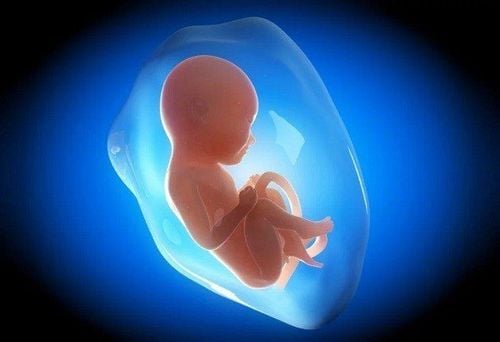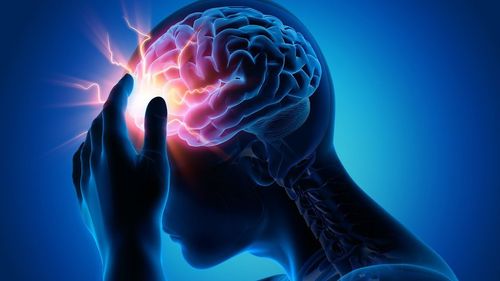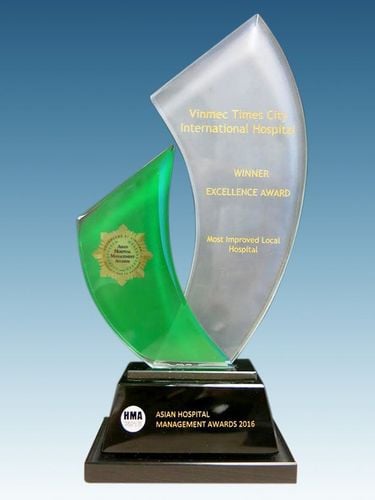This is an automatically translated article.
The article is professionally consulted by Doctor of Pediatrics - Neonatology - Vinmec Hai Phong International General Hospital
Congenital torticollis in children can originate from many different causes, of which the main cause is problems related to the sternocleidomastoid muscle groups in the neck. If not detected and treated early, this disease can cause dangerous complications for children's health and leave negative consequences when children grow up.
1. What is congenital torticollis?
Torticollis is a condition in which a child's head is tilted to one side while the chin is turned to the other. This condition means that the neck is twisted, it is also sometimes called “wryneck”. While it may seem painful at first glance, your baby won't actually feel it.
When a child is born with this condition, it is called congenital torticollis. There is also another condition associated with torticollis, which can develop after a child is born, and it is called forming torticollis. For this torticollis, the baby's chin and head will turn to the same side.
According to research, about one out of every 250 babies born will have congenital torticollis. In addition, about 10-20% of children with torticollis may also have hip dysplasia, in which the child's hip joint is deformed.

2. What causes congenital torticollis?
Congenital torticollis usually occurs because the muscle connecting the sternum and collarbone is tight to the baby's skull. These muscles are often referred to as the sternocleidomastoid muscles. Tightness of these muscles can develop from the baby's lying position while in the mother's uterus (head tilted to one side), or sometimes from damage to the muscles that occurs in the uterus. childbirth process.
Another less common cause is an abnormality in the child's neck bones (cervical vertebrae). The bones of the neck can form abnormally, stick together (fuse) or a combination of the two. In medicine, this condition is known as Klippel-Feil syndrome.
Through diagnosis, a specialist will determine whether the cause of congenital torticollis in children is due to Klippel-Feil syndrome, because many children with this syndrome often suffer from this syndrome. along with a number of other health problems, especially kidney and hearing problems. Sometimes, the recommended stretching exercises for torticollis are not only ineffective, but can be potentially dangerous for a child with Klippel-Feil syndrome.
In rare cases, congenital torticollis in children can be caused by genetic factors. Or, sometimes it can be the result of a serious medical condition, such as a tumor in the spinal cord or brain that leads to severe damage to the nervous system and muscles.
3. How to know if a child has congenital torticollis?
One of the ways to know if a child has congenital torticollis is to observe the child's abnormal posture. With congenital torticollis, children tend to tilt their heads to one side, and their neck movements appear to be limited. Another sign that your baby is suffering from this condition is a small bump (hump) on the side of his or her neck.
In addition, infants with torticollis can also develop flat head, which is characterized by an asymmetry of head shape, which occurs when the baby frequently sleeps with the head turned to the side.

Usually, congenital torticollis is diagnosed within the first two months after the baby is born. Through diagnostic tests, the doctor will determine whether the child is suffering from this condition.
In addition to ordering a complete physical exam for the child, the doctor may perform a neck X-ray to determine what type of torticollis the child has. In certain cases, the doctor may also order other tests, such as a kidney or pelvic ultrasound, depending on the type of torticollis the child has.
4. Treatment of congenital torticollis
To treat a child's congenital torticollis, parents should take the child to a physical therapist or an orthopedic surgeon.
Usually, congenital torticollis in children will be treated with neck stretching and repositioning exercises. You will need to do these stretches for your child several times a day. The biggest advantage of these movements is that they are not too complicated to perform, but you need to do them under the guidance of a specialist to get the best treatment results.
For children with congenital torticollis, give the child the opportunity to turn his or her head to the side as much as possible. For example, if your baby has trouble turning his head to the right, you can put him in the crib and stand on his right side so he can tilt his head that way to look at you. In addition, you should also put your baby on his stomach when awake to help develop the muscles in his neck.

5. How long will it take to achieve the treatment effect?
Children's congenital torticollis can improve in a few weeks as long as it is detected early enough, ideally by the time the child is 2 or 3 months old, and you also follow the right treatment exercises. doctor's instructions. Ideally, congenital torticollis should be completely corrected before the child is one year old.
However, if the muscles cannot return to their normal length and the baby's range of motion is still limited by 18 months, you should take your baby to see an orthopedic surgeon. The doctor may ask your baby to perform surgery to lengthen the muscles. According to statistics, about 15% of cases of congenital torticollis need this surgery.
For children with torticollis, early detection of abnormalities and taking them to a pediatric clinic is one of the best prevention measures for children with torticollis.
As a key area of Vinmec Health system, Pediatrics Department always brings satisfaction to customers and is highly appreciated by industry experts with:
Gathering a team of top doctors and nurses in Pediatrics : consists of leading experts with high professional qualifications (professors, associate professors, doctorates, masters), experienced, worked at major hospitals such as Bach Mai, 108.. Doctors All doctors are well-trained, professional, conscientious, knowledgeable about young psychology. In addition to domestic pediatric specialists, the Department of Pediatrics also has the participation of foreign experts (Japan, Singapore, Australia, USA) who are always pioneers in applying the latest and most effective treatment regimens. . Comprehensive services: In the field of Pediatrics, Vinmec provides a series of continuous medical examination and treatment services from Newborn to Pediatric and Vaccine,... according to international standards to help parents take care of their baby's health from birth to childhood. Advanced techniques: Vinmec has successfully deployed many specialized techniques to make the treatment of difficult diseases in pediatrics more effective: neurosurgery - skull, stem cell transplant blood in cancer treatment. Professional care: In addition to understanding children's psychology, Vinmec also pays special attention to the children's play space, helping them to play comfortably and get used to the hospital's environment, cooperate in treatment, improve the efficiency of medical treatment. If you need consultation and examination at Vinmec Hospitals of the national health system, please book an appointment on the website for service.
Please dial HOTLINE for more information or register for an appointment HERE. Download MyVinmec app to make appointments faster and to manage your bookings easily.
Reference source: babycenter.com













